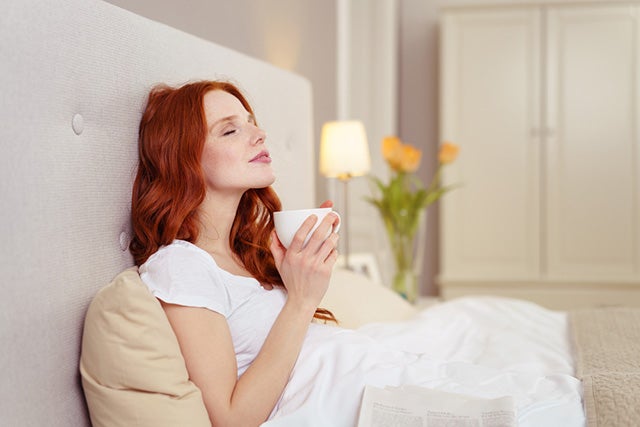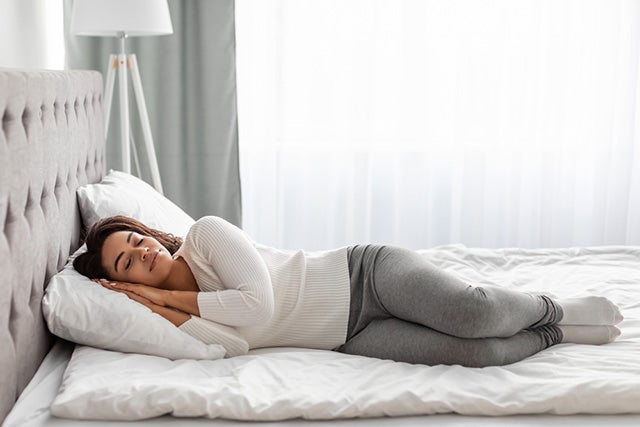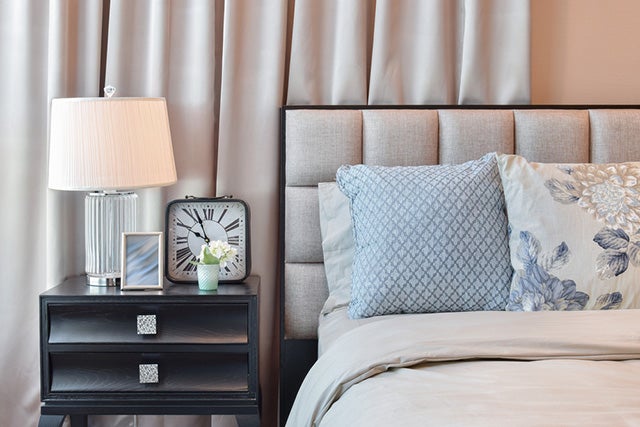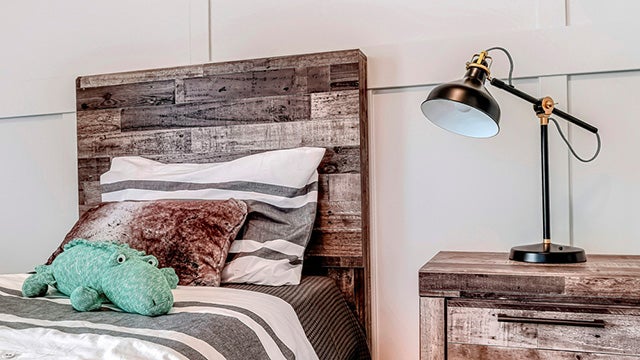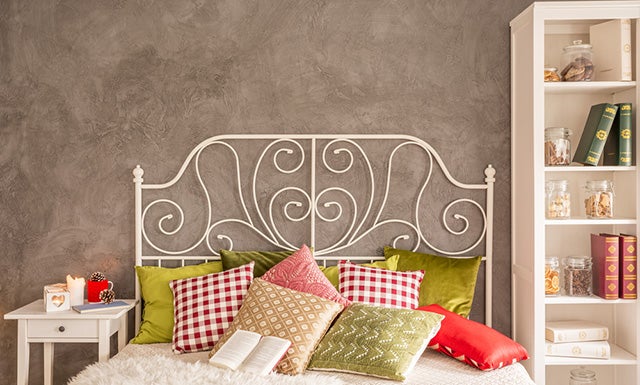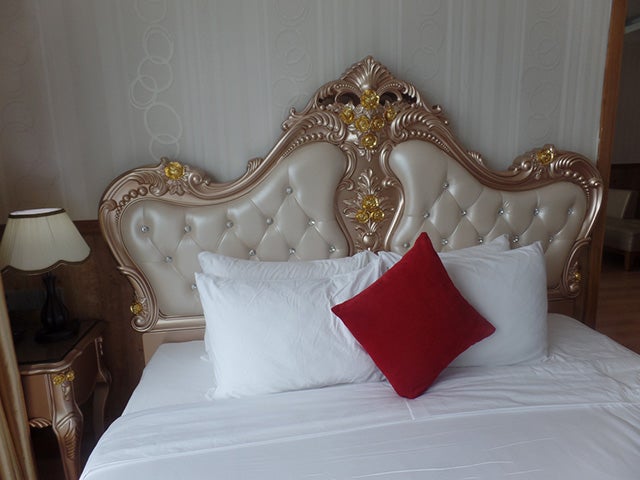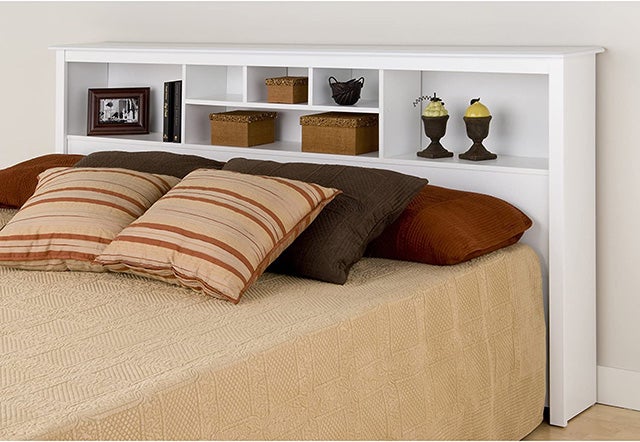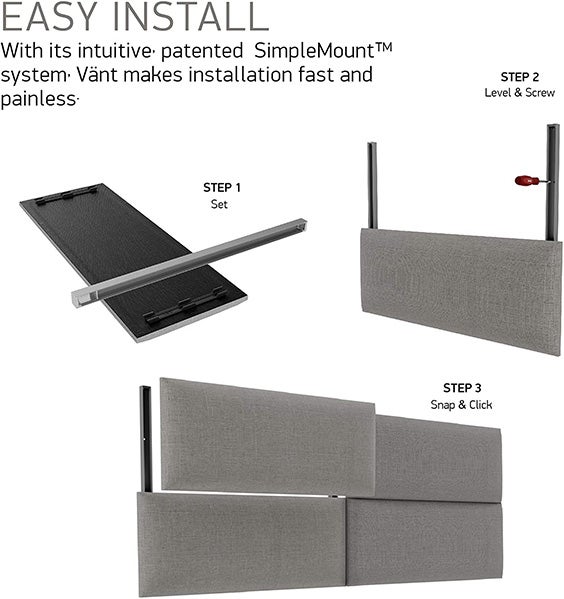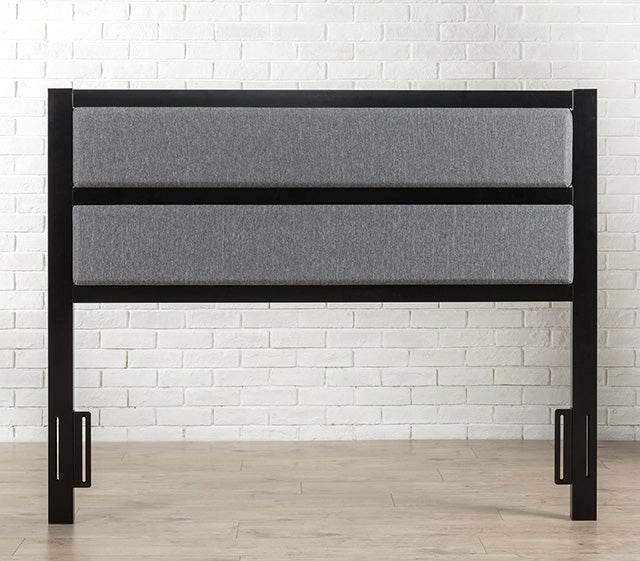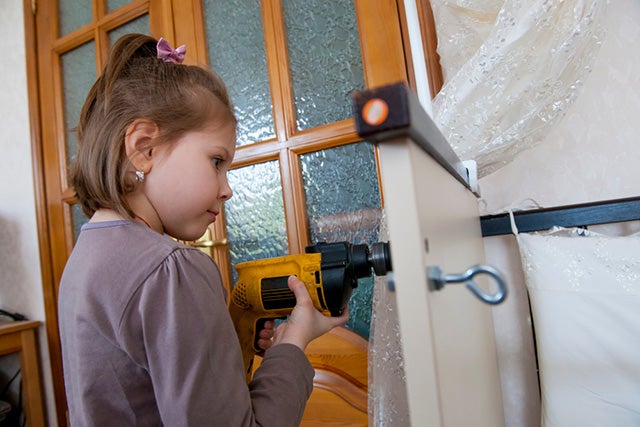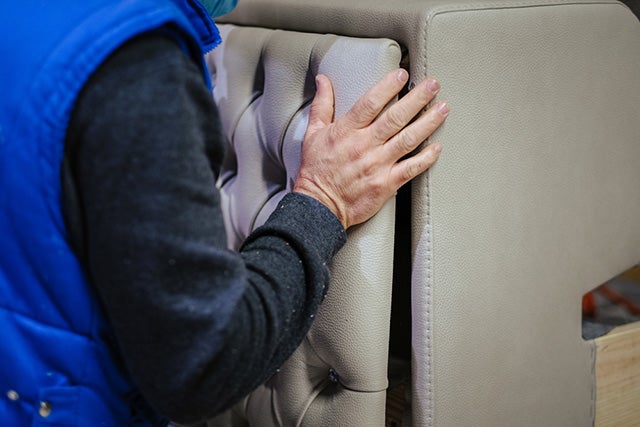You need a headboard to stay comfortable when sitting up in bed and to enhance the ambiance of your room.
The good news is bed frames can hold almost all types of headboards. Frame-mounted headboards are also easier to attach than wall-mounted ones.
If you’re planning to attach a headboard to a bed frame, follow our step-by-step guide and continue reading to learn other ways to attach a headboard.
Know Why You Need a Headboard
If you haven’t bought a headboard yet, it’s important to choose one that will cater to your bedroom needs. Here are some purposes of headboards depending on the type.
• Prevents Wall Damage
If you stick your body to the wall, the sweat will cause the paint to tear and smudge. Even the perspiration on your pillow can touch the wall and damage it. A headboard will keep it clean and new!
• Something to Lean on
A headboard will prevent frequent back aches when you sit on your bed while reading a book or doing homework on your laptop. It’s also best for breakfasts in bed.
• Keeps the Bedroom Warm
Headboards made of certain fabrics can regulate the temperature in the bedroom. If it’s too hot, the headboard can absorb the heat. But if it’s too cold, it will keep you from shivering. Get a well-insulated to give you a good night’s sleep.
• For Decoration
Headboards will create a beautiful ambiance to your room, whether it’s wooden, upholstered, or in a shelf design. The furniture piece will surely freshen up your interior.
• Stabilizes the Pillows
A headboard will let your pillow stay on top of the bed if there’s a huge space between the wall and the bed.
Decide What Kind of Headboard to Get
Once you know what you need a headboard for, it’s time to choose what kind to get. Here are the main types of headboards.
• Wooden Headboard
Wooden headboards are originally made to prevent the head from touching the cold wall. Now, they serve as great décor for the bedroom.
• Metal Headboard
Metal headboards aren’t trendy now, but they are perfect for a Victorian-themed home. You can also spray-paint the metal to look more modern and polished.
• Upholstered Headboard
Upholstered headboards are the most luxurious and sophisticated headboards. They also feel comfortable because of the soft fabric. Some common materials include leather, velvet, and fabric.
• Freestanding Headboard
Freestanding headboards don’t have to be attached to a wall or bed frame. You can move them from one bed to another.
• Wall-Mounted Headboard
This kind of headboard is attached to the wall to fit any bed frame you like.
• Bed Frame-Mounted Headboard
A bed frame-mounted headboard is attached to the bed frame for it to look like an all-in-one bed.
How to Attach a Headboard to Bed Frame
If you’re getting a bed frame-mounted headboard, follow these instructions when assembling and attaching.
1. Prepare the Tools
Unbox the headboard and prepare all the tools you need to screw it on the bed frame. Bolts, screws, washers, nuts, and a screwdriver might be needed. Others also use wall mounts because they want to attach the headboard to the bed frame and wall.
2. Look for the Holes on Your Bed Frame
Most manufacturers of bed frames already drill holes on their products because they know you’re likely to attach a headboard to it.
If your bed frame has storage on only one side, make sure the headboard won’t be positioned against it.
Look for these holes at the front and back of the bed base by running your fingers on the frame. They can also be hidden under a layer of fabric. Some put stickers to guide you on locating the holes, but most companies don’t do this.
3. Put a Hole on the Base’s Fabric
Use a screwdriver to pierce the outer fabric. This will let you attach the headboard with the bolt later on.
4. Screw the Bolt and Install the Headboard
After piercing a hole, screw the bolt to the hole, making sure to leave around 4 cm of visible thread. Do the same with the second bolt.
Once the bolts are screwed, insert the headboard between the bolt and the bed with the help of the struts’ pronged ends. Tighten the bolts after placing the struts in the right place. Make sure it is tight, secure, and firm between the frame and the bolt.
5. Adjust the Headboard
Now all you have to do is adjust the headboard based on your preferred height. Ideally, the bottom part of the headboard must be above the mattress.
Adjusting the headboard is easy. The bolts just have to be loosened then you lift the board up or down.
6. Prevent the Headboard from Moving
After adjusting the headboard, tighten it once again to stop it from moving. Pliers and wrenches are your best friends in this process. You may also use thread-locking adhesive on the bolts.
Other Ways to Attach a Headboard
Here are other ways you can attach a headboard aside from screwing them to the bed frame.
— Attaching a Headboard to a Wall
You will need wall mounts and drywall anchors to attach a headboard to a wall. This will also require measuring skills because you have to ensure that both sides are properly aligned.
— Attaching a Headboard to a Metal Frame
Attaching a headboard to a metal bed frame is the most difficult method. When doing this, try using headboard brackets.
— Attaching the Headboard to a Wooden or Platform Bed
Simply attach the headboard directly on the platform bed frame with a piece of wood or two against the bed frame.
— Attaching a Headboard to an Adjustable Bed
Placing a headboard on an adjustable bed is similar to placing it on a regular bed. This will make it look more luxurious and classier.
— Attaching a Headboard to a Bed with No Holes
If you have a divan bed or other kinds of bed without holes, you will need to drill holes on the correct location of the bed on your own. If you want to avoid this, you’ll need to purchase a free-standing headboard instead.
In Conclusion
You might be interested: The Best Headboards for Your Bedroom
Most bed frames can accommodate all kinds of headboards because they already have holes. All you have to do is screw the bolt, slide it, and adjust for tightness. Make sure to attach the headboard correctly to prevent it from moving or falling over.
We hope this guide has helped you complete the look of your bedroom with a frame-mounted headboard.
Do you use a headboard? Comment your headboard-related questions and feedback below! And when you’re done, be sure to check out our guide to the best bed frames.
Photo credit: Iglenas/Shutterstock; stockfour/Shutterstock;
WorldWide/Shutterstock; Prostock-studio/Shutterstock;
Jason Finn/Shutterstock; Photographee.eu/Shutterstock;
traveladdict/Shutterstock; Alexey Kompaniychenko/Shutterstock;
Wirestock Creators/Shutterstock
Frequently Asked Questions
How High Should a Headboard Be?
In general, a headboard for twin-sized beds should be 14 inches on top of the mattress. 28 inches is the ideal height for full and queen headboards, while 58 inches is the standard for king-sized and Cal king headboards. If you want an extravagant look, get a wall-mounted headboard that sits 65 to 70 inches above the mattress to cover your whole wall.
Can You Attach a Headboard to Any Kind of Bed Frame?
Yes. Whatever your bed frame is, you can always attach a headboard to it. If you don’t want to experience the struggle of drilling holes, get a freestanding headboard instead.
Can Headboards Sit on Mattresses?
The lower edge of the headboard must hide under the mattress from three to four inches. This will promote back support as you lean on the headboard.
Can My Headboard be Attached to a Box Spring?
No. Box springs are not durable enough to have a headboard attached to them. The wooden pieces underneath the fabric are not sturdy. As an alternative, you may turn your box spring into a platform bed or use a wall-mounted or free-standing headboard instead.
Should My Headboard Reach the Floor?
Only your free-standing headboard should reach the ground. Frame-mounted and wall-mounted headboards should not touch the floor.

